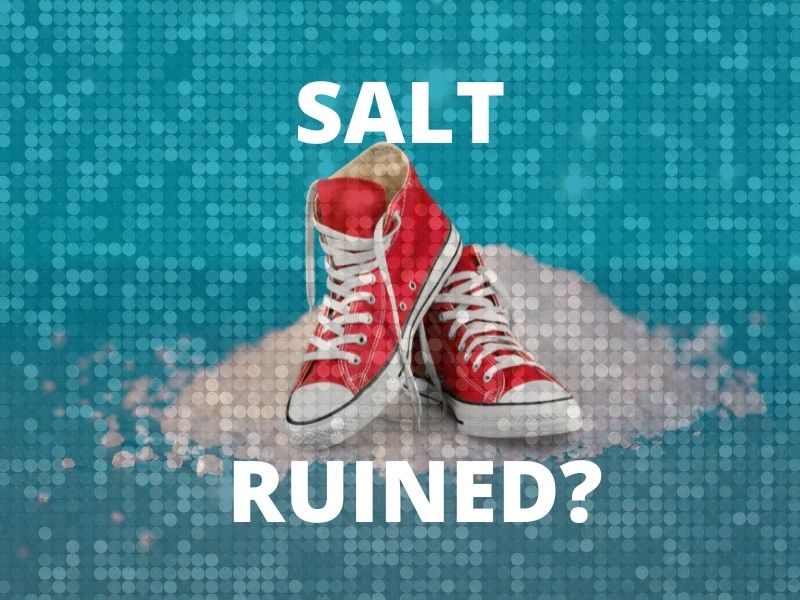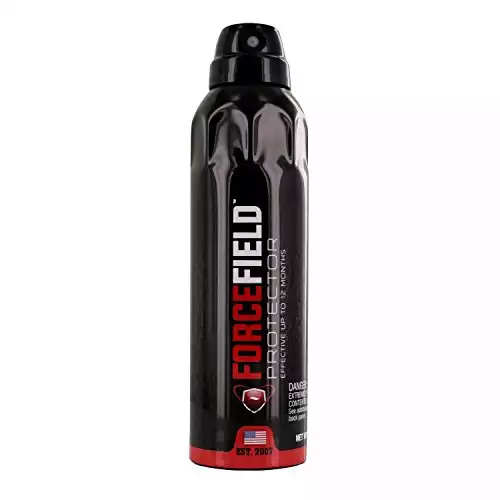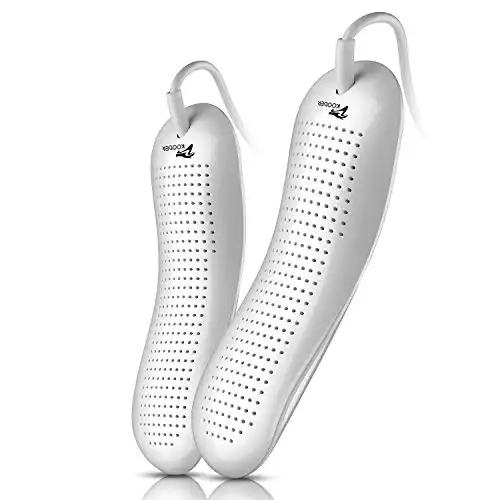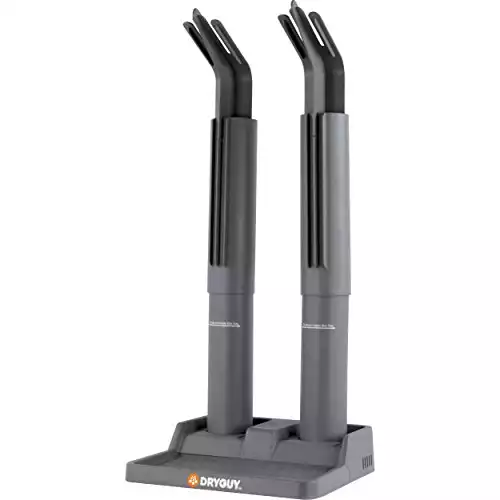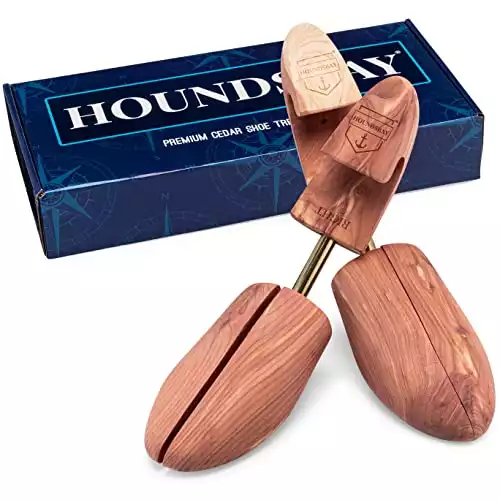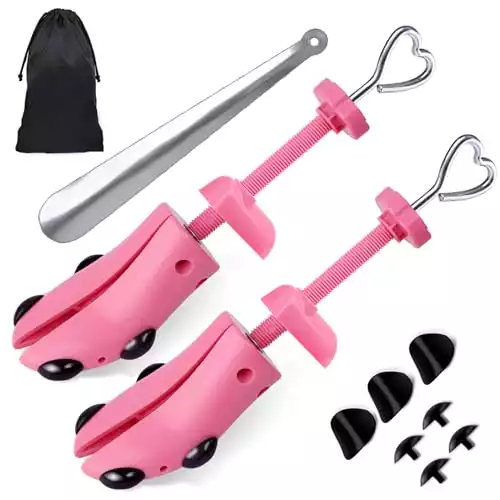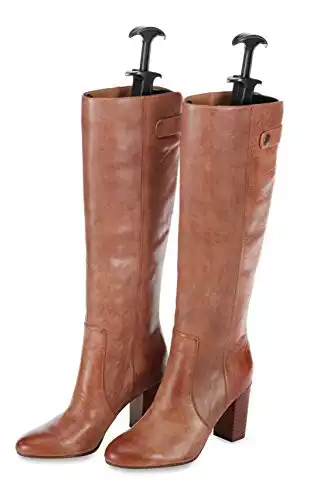Winter means salt on the roads, on the sidewalks, and pretty much on every surface that’s even remotely close to the pavement that’s been salted. It’s like glitter, once you put it out there, it’s not going anywhere. And, it’s spreading… fast. Salt isn’t just some innocent mineral that happens to melt ice. Salt is fairly destructive and can damage just about anything it comes into contact with.
What can salt damage? Things that come into contact with the ground are most susceptible…like shoes. Does salt ruin shoes? Yes, salt can most certainly ruin shoes. Salt doesn’t discriminate and will ruin any and every shoe it can, but it especially wreaks havoc on shoes of the leather and suede variety.
But don’t worry, friends. Your shoes don’t have to be permanently ruined by nature’s glitter. Salt is a necessity in areas where snow and ice are common, especially for those of us who are a little on the clumsy side and are more likely to slip and fall on the ice. Keep reading for how to keep your shoes safe from winter’s salty accomplice.
Where is the Salt – and Why Is It There?
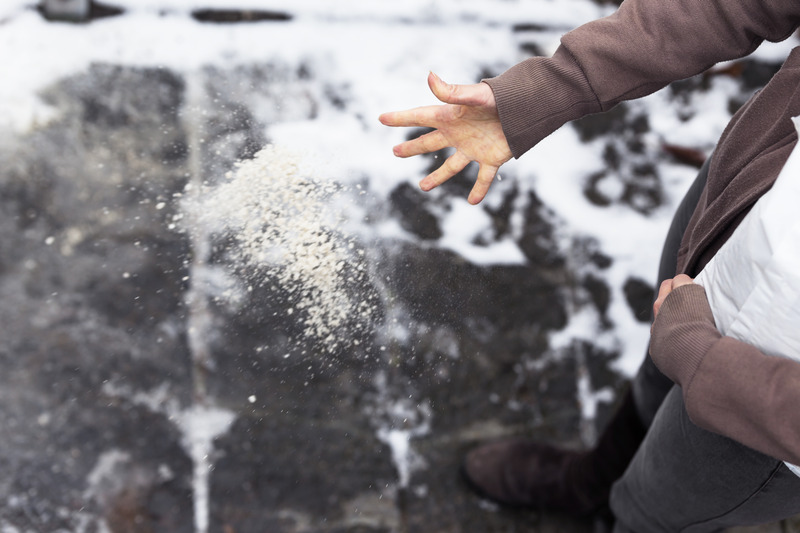
Stepping on salt is inevitable during the winter months, and even for a while afterward. If you’ve ever driven your car through the streets after they’ve been salted, you know exactly what salt damage looks like, and just how easy it is to get salt from the pavement onto your car.
Now, just imagine, getting salt on your shoes is even easier to do than on your car.
Once the salt touches the ground, there’s really no stopping it. So, before we can get into how to save your shoes, it’s important to know what you’re dealing with in the salt department.
Why Use Salt?
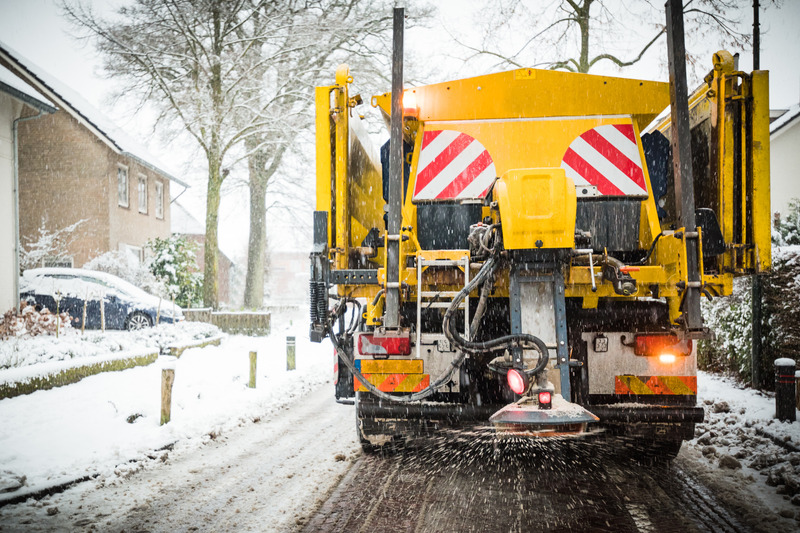
Before any ice or snowfall, you’ll see and hear the salt trucks out and about, sprinkling the roads. Let’s talk science for just a minute, why is salt the weapon of choice for battling slickness from ice?
When water and salt mix, or when the snow or ice comes in contact with the salt, it dissolves. This causes the actual freezing point to become lower, so at 32 degrees Fahrenheit, the water still won’t freeze. Instead, it prevents the freezing from happening, or if salt is poured on already frozen water, it causes it to melt.
Salt vs. Other Ice Melting Products
Many other products on the market can be used to melt ice or prevent surfaces from freezing. However, there are a few reasons why salt is the method of choice, especially for city streets and sidewalks, as well as parking lots.
Salt Is Non-Toxic
Most of the other products on the market have some level of toxicity, whether it’s ingested or comes into contact with skin. These products can be dangerous to pets or other animals and are definitely harmful to children that like to put things in their mouths. There are also high levels of chemicals that can burn or irritate skin and eyes if they’re touched.
Salt is a natural ice melt. Rock salt, the kind that’s used to melt ice, isn’t exactly the best form of seasoning, it won’t cause permanent harm or make anyone sick. It’s not recommended that anyone touch it or rub it on their skin, but again, the consequence of doing so isn’t nearly as severe as what happens with chemical ice melts.
- Salt Is More Eco-Friendly
We know that toxins can seep into the ground and infiltrate our water system, so because salt is non-toxic, it’s more water-friendly than other options. Also, salt is a sustainable material, found in deposits all over the world. Therefore, it doesn’t have to be manufactured in a facility.
Salt isn’t free of any repercussions, however. In areas where there are freshwater rivers, streams, and lakes, too much salt can harm fragile ecosystems, damaging plant life, and animals.
Salt Is Cost-Effective
Again, salt is one of the earth’s natural resources. Although rock salt is still pricey and should be used conservatively, it’s much more cost-effective than commercial ice melt products.
Snow and ice removal is usually up to the city or other governing agency. In privately-owned parking lots such as apartment buildings, there’s usually a property management company.
In areas where snow removal and ice prevention is just a way of life, there’s typically a budget or allowance for the amount that can be spent on this safety precaution.
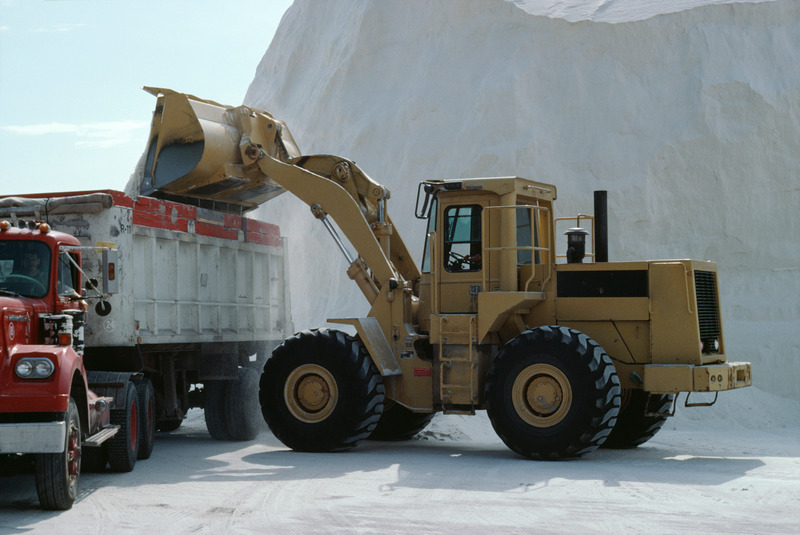
But this clearly isn’t an area where corners can be cut, since ice and snow can be so dangerous. Therefore, using something effective, but also not the costliest option, is obviously the best choice.
Salt Works
When it comes to ice and snow, it’s important to use a melting agent that’s known to work. Ice and snow are particularly dangerous, so using a product that’s been tested, and known to work, is key in preventing accidents and injuries.
As we briefly discussed earlier, there’s science behind how salt works to prevent freezing or to melt existing ice. In most cases, science doesn’t lie. Also, salts have been used basically ever to melt ice, and it’s never not worked.
Then Where Does the Salt Go?
After the salt is put down to either keep ice from forming or to melt ice after it’s frozen, it pretty much goes wherever we take it. Rock salt is much chunkier and coarse than regular salt, resembling small, sharp pebbles.
After the salt dissolves in the water and slows the freezing, we’re left with the two parts of salt: sodium and chloride ions. A lot of this washes away into the ground and water, which can cause issues if it’s overused. But the rest is left and sits around making a mess.
So, What Does Salt Do To Your Shoes?

If you’re driving or walking around after salt has been put out on the roads or sidewalks, you’re probably getting your footwear all wet. But, there’s also another issue taking place with the salt as it creeps onto your shoes.
Just because you wipe down your shoes after stomping around in the salt, doesn’t mean it’s not still there. By the time you get back home or to work, the salt has already permeated the surface and is working its magic on the shoes. Or, not so much magic, really.
Stains and Discoloration
Leather and suede shoes are often left with spots that are white and crusty looking. But, other materials such as canvas or even rubber can be left looking splotchy. Lighter-colored shoes can also develop a really unsightly yellowish tint if the salt is left to dry inside the material.
Wear and Tear
Shoes are often the first members of our wardrobe to need replacement since they’re pounding the pavement so often. And, depending on the material, everyday wear and tear might come more frequently for some than others. Salt, however, can speed up the process by burning right through softer materials.
It’s not just the upper part of the shoe that can be ruined, either. Rubber soles aren’t exempt from salt damage. Even waterproof boots and shoes meant for wearing in snow and ice can sustain extra wear and tear in the form of holes and weak spots, just from salt being left on the surface.
Salt is very drying, which can also lead to faster deterioration of certain materials. Rubber and leather are two of the most likely shoe products that can dry out, becoming cracked and chipped from salt.
How to Save Your Shoes from Salt
Luckily, you don’t have to let salt ruin your shoes. There are several things you can do to protect your shoes from getting ruined before you venture out onto the salty streets. And, if you’ve maybe already exposed your shoes to some saltiness and you see signs of salt damage, have no fear. The damage might not be irreversible, yet.
Preventative Measures
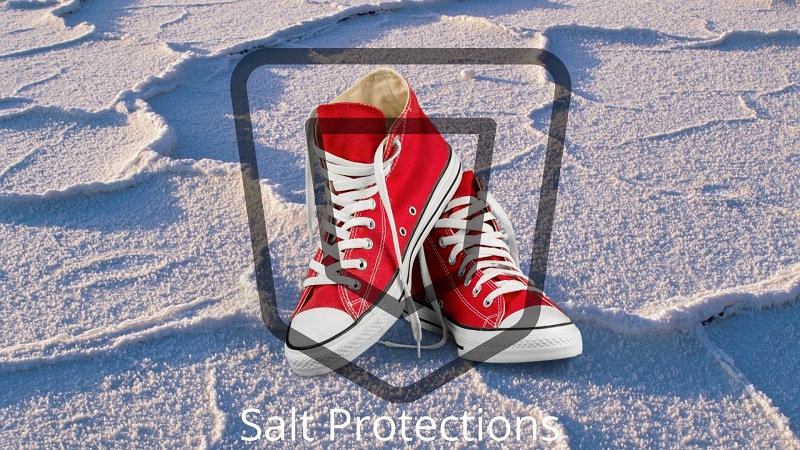
In a perfect world, we’d all have the time to protect our shoes from salt. Or, we’d all be great at planning ahead and being proactive, so our shoes would be ready to go when the salt hits the ground. I’m not one of those people, but for those of you that are, here’s what you can do to keep your shoes safe.
Use a Repelling Treatment
There are a few different preventative treatments available in the form of sprays or lotions. Applying these to your shoes before going into the elements and allowing ample time for the product to dry is a good first line of defense against salt damage. They’ll make shoes tolerate water and repel dirt and some salt.
Keep ‘Em Clean
Even if there’s no visible salt on your shoes, this is still an important action to take (article). Not all salt is visible, especially right after there’s been precipitation. The dissolved salt is pretty much invisible but still ready to do damage.
When you get to where you’re going, whether it’s home, a friend’s house, work, or wherever, give your footwear a quick and dry wipe-down. Again, if you like to think ahead, keep a soft and dry rag with you in a coat pocket or purse.
Otherwise, a paper towel is better than nothing. A dry swipe will at least get rid of any salt that’s not already made its way past the surface of your shoes.
A preliminary wipe down will also clear away any loose debris that’s clinging to your shoe. Dirt and other particles that might have jumped onto the surface of your shoes are friends of salt, and they give it a place to hang onto.
So even if salt isn’t the issue right away, whatever else is lingering on the surface of your shoe will help the salt become a problem when it’s ready.
Make Sure Shoes are Dry
There are sometimes when shoes are going to get wet. Whether it’s accidentally stepping in a puddle or just rainwater, wet shoes are basically salt invitations. If there’s been recent snow or ice, chances are, salt is on the pavement, and it’s lurking in that melted water that’s now on your shoes.
As soon as you’re able, take your shoes off and allow them to dry completely. Simply turning them upside down and rotating them every so often to allow all of the surfaces to dry will work just fine. But, using a shoe rack or even a shoe/boot dryer (AD) will help speed up the process. Try one of these:
Some of these are actually small enough they can fit in a backpack, so you may even be able to bring them with you to work if you really need to. Also, bonus points for the fact that drying your shoes also eliminates odors.
Another way to dry shoes is to blot them dry with a towel or even stuff them with paper towels or another absorbing material. If you’re not able to completely dry them, at least taking out some of the moisture so that they’re not soaking will help a little.
Be careful not to expose them to direct heat or allow them to dry too quickly. Some materials, like leather, can crack if they dry too quickly.
After the Fact
Then there are those of us, like myself, who maybe don’t have the time or the energy to take those precautions that can prevent the damage from happening in the first place. If you’re like me, preventative measures just don’t always happen. But again, don’t worry; your shoes don’t have to be completely ruined by salt.
Remove the Salt
If you know for a fact that your shoes have been exposed to some sort of salt water, and there’s no doubt that salts are working their way into your shoes, then you have to get rid of the salt. Letting it sit and fester on the surface means it’s eventually going to work its way inward, and it can eventually leave its mark.
Vinegar Solution
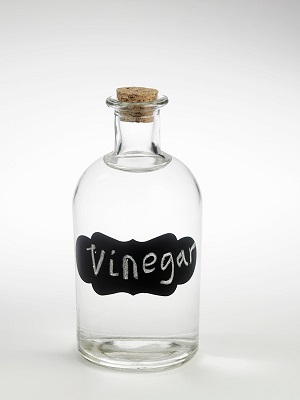
- Distilled white vinegar
- Water (preferably distilled, but work with what you have)
- Soft cloth (microfiber or an old, super soft t-shirt works best.)
An all-natural vinegar solution is one way that you can clean the salt off of your shoes. This can be used on any kind of shoe material, including leather. Simply combine two parts of water and one part of vinegar. Mix well, and gently rub onto shoes with the soft cloth.
Dish Soap
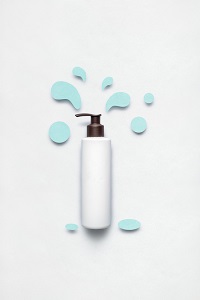
- Old toothbrush (or other soft-bristled brush or even washcloth)
- Dish soap
- Water (cold for leather and suede, warm for other fabrics)
- Soft colorless cloth
Use the toothbrush to carefully brush away any of the dried-up and crusty salt that’s attacking your shoes. If your shoes are leather or suede, be very careful not to brush too hard, or else you could further damage the material.
Then, mix about four to five drops of dish soap with cold water. Dip the rag into the mixture and carefully press it into the stained and salty areas of the shoes. If the salt stains are refusing to leave, then, and only then, very gently rub the shoe with the cloth in circular motions.
Restore Shape
If your shoes have been exposed to salt and water, they’re going to, of course, have to dry. If there is any leftover salt that has penetrated the surface of the shoes, they’re going to experience an added level of drying from the salt. As the shoes dry, using a shoe form will help keep them from becoming misshapen as the salt and water dry out.
If your shoes have already dried and are showing signs that they’re not quite the same as they once were, then getting them wet and using a shoe tree will help bring them back. A newly ill-fitting shoe that once fit like a glove is a big indicator of salt damage.
Shoes can experience shrinking in length, width, or both. Any of these shoe shapers or shoe trees will do the trick for remedying the situation:
Thanks for visiting Helpshoe.com

